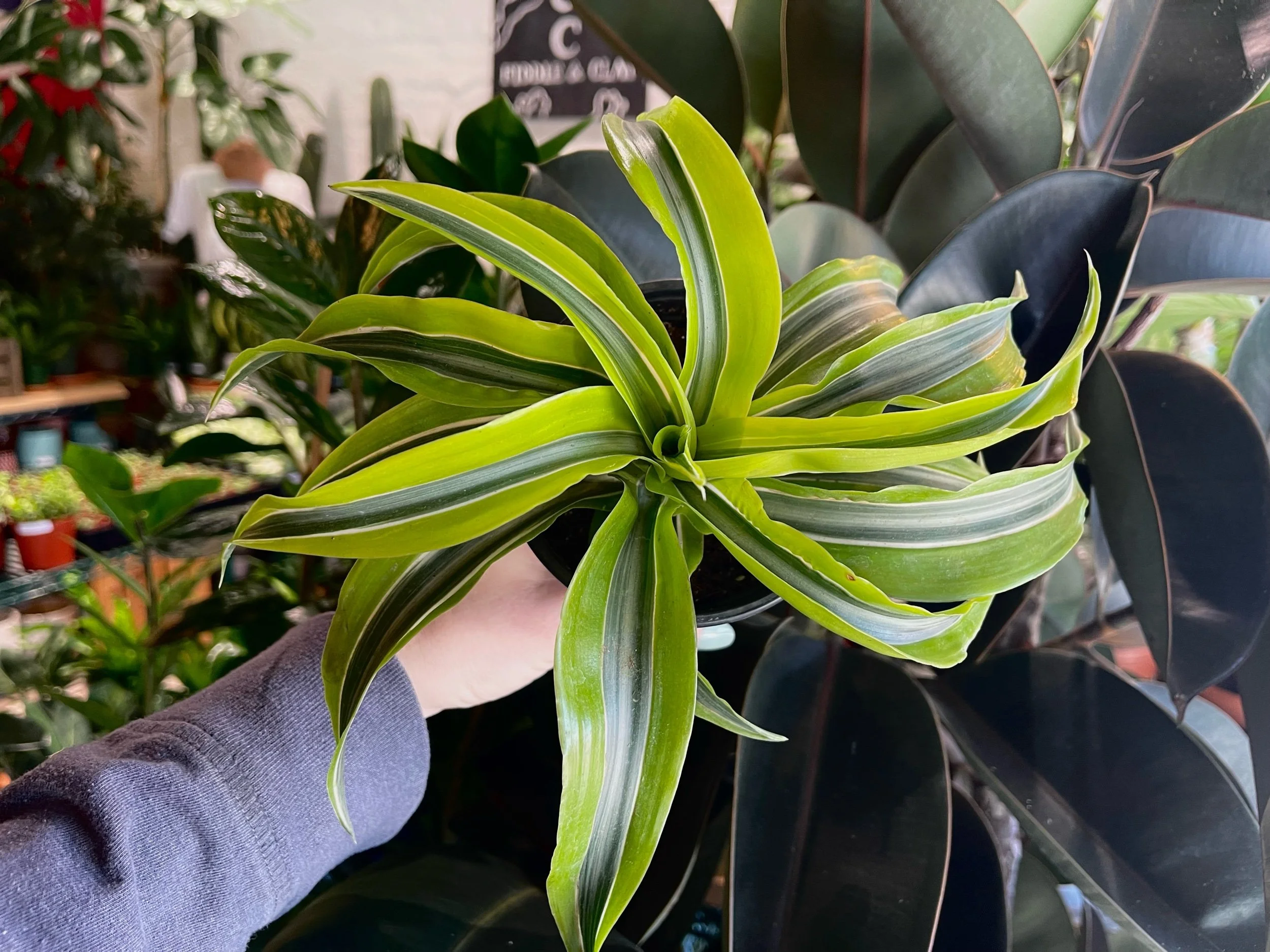Dracaena Lemon Lime Care Guide
Family: Asparagaceae
Genus: Dracaena
Botanical Name: Dracaena deremensis
Difficulty: Great for beginners
Dracaena Lemon Lime are such great plants for beginners! If you’re looking for an easy, low-maintenance plant, stop here and read up on all you need to know to grow a happy dracaena!
Light
Your Dracaena Lemon Lime will be happiest in bright indirect sunlight. They don’t necessarily thrive in low-light conditions, but they can tolerate them without a problem. Just don’t be surprised if you notice a lack of growth and loss of its vibrant colors if your plant is currently in lower light.
Water
They will not tolerate standing water, so be sure to wait for the top inch of soil to dry before watering them. While most plants can tolerate regular tap water, Dracaena are a little more sensitive to things like fluoride. It wouldn’t hurt to go the extra mile to make sure you’re giving them clean water by using filtered or bottled water.
Climate
Dracaena Lemon Lime is very sensitive to colder temperatures. Average household conditions are perfect for them because they love temperatures between 65-75°F and normal humidity levels ranging between 40-60%.
Soil
Because they are sensitive to excess water, choose a rich well-draining soil to keep your Dracaena happy. You never want the soil to be completely soaked or dry. A good rule of thumb is to let the top 1-2 inches of soil dry.
Pests & Diseases
Red spots surrounded by a yellow halo: leaf spot diseases
Yellow or dead bands across leaves: it got too cold
Tend to be bothered by thrips, scale, and, and mealybugs
Tips
They can stay in the same pot for up to 2 years without repotting.
Ready to be repotted when soil is loose or the roots are impacted.
Water them with clean water.
Some leaf drop is healthy— They’re just making room for new growth!
Signs your plant isn’t happy
Brown leaves: overwatered or too much fluoride in the water
Tan or brown spots: flourished in the water
Droopy or yellow leaves: overwatered or poor drainage
Smelly brown spots: root rot
Propagation
The best way to propagate your Dracaena is by taking cuttings from the top of the plant. Using clean gardening scissors, cut just below the node at the base of a leaf. Without the node, the cutting will not produce roots.
You can choose to let the cuttings root in water or potting mix. If you want to monitor its new growth more closely, placing the cutting in water is the way to go. Place the cutting in a warm spot, and wait for little white roots to shoot from the node!
When the roots are about 2 inches long and have their own little root systems, you can transfer the cutting to a pot filled with damp soil.
Fun Facts
They can help purify the air in your home.
They were a part of NASA’s clean air study!
They can be planted outside in the warmer months and then dug up and brought inside in the colder months!
Hardiness Zones
Before you move your plant outside, be sure to check the hardiness zone to save yourself some grief and the loss of a beloved plant.
The hardiness zones for Dracaena Lemon Lime are: 10-12
If you live in Tennessee, here’s a hardiness map to help you decide if your plant can survive outside! Before you move your plant outside, be sure to check the hardiness zone to save yourself some grief and the loss of a beloved plant.


